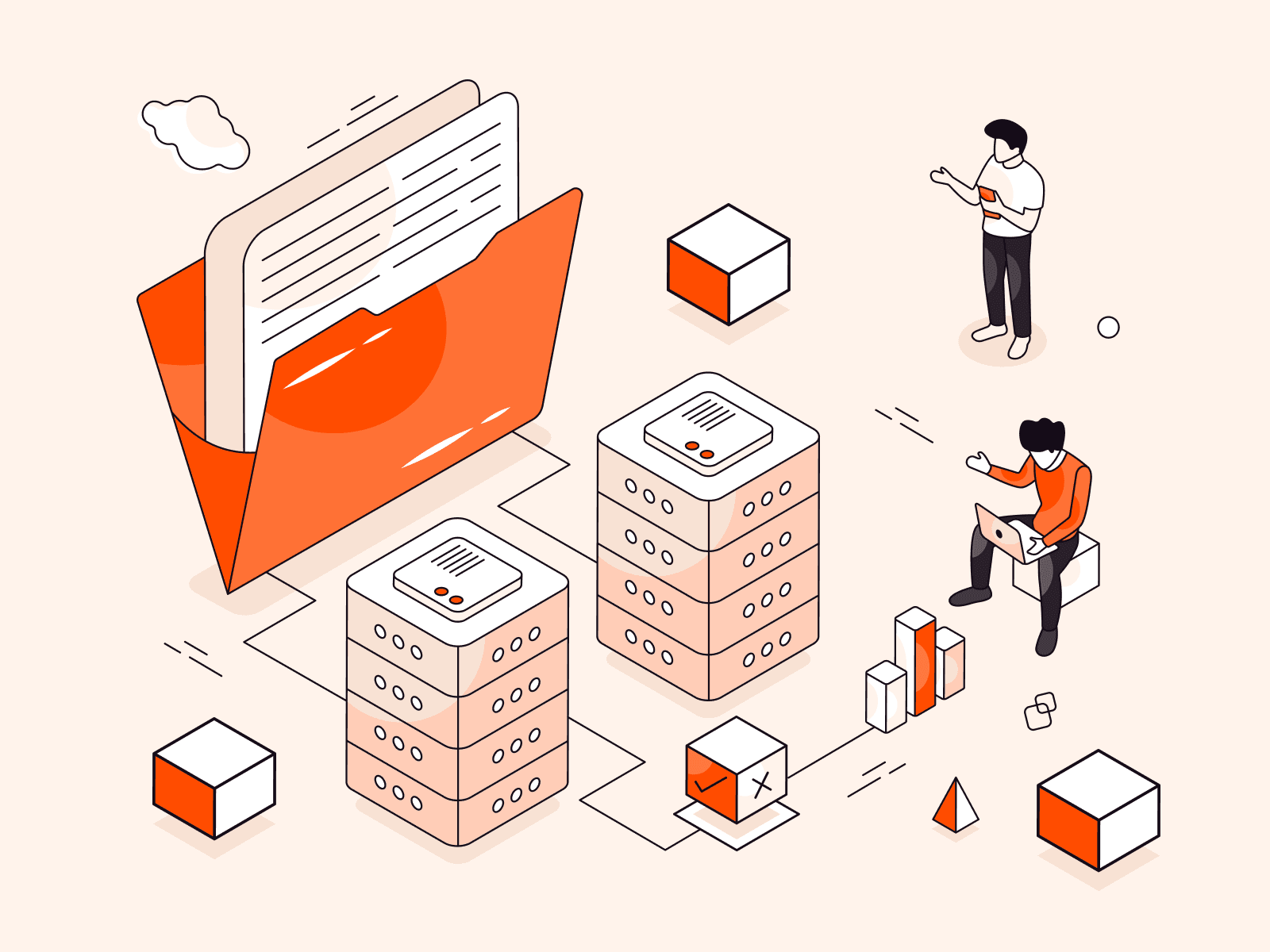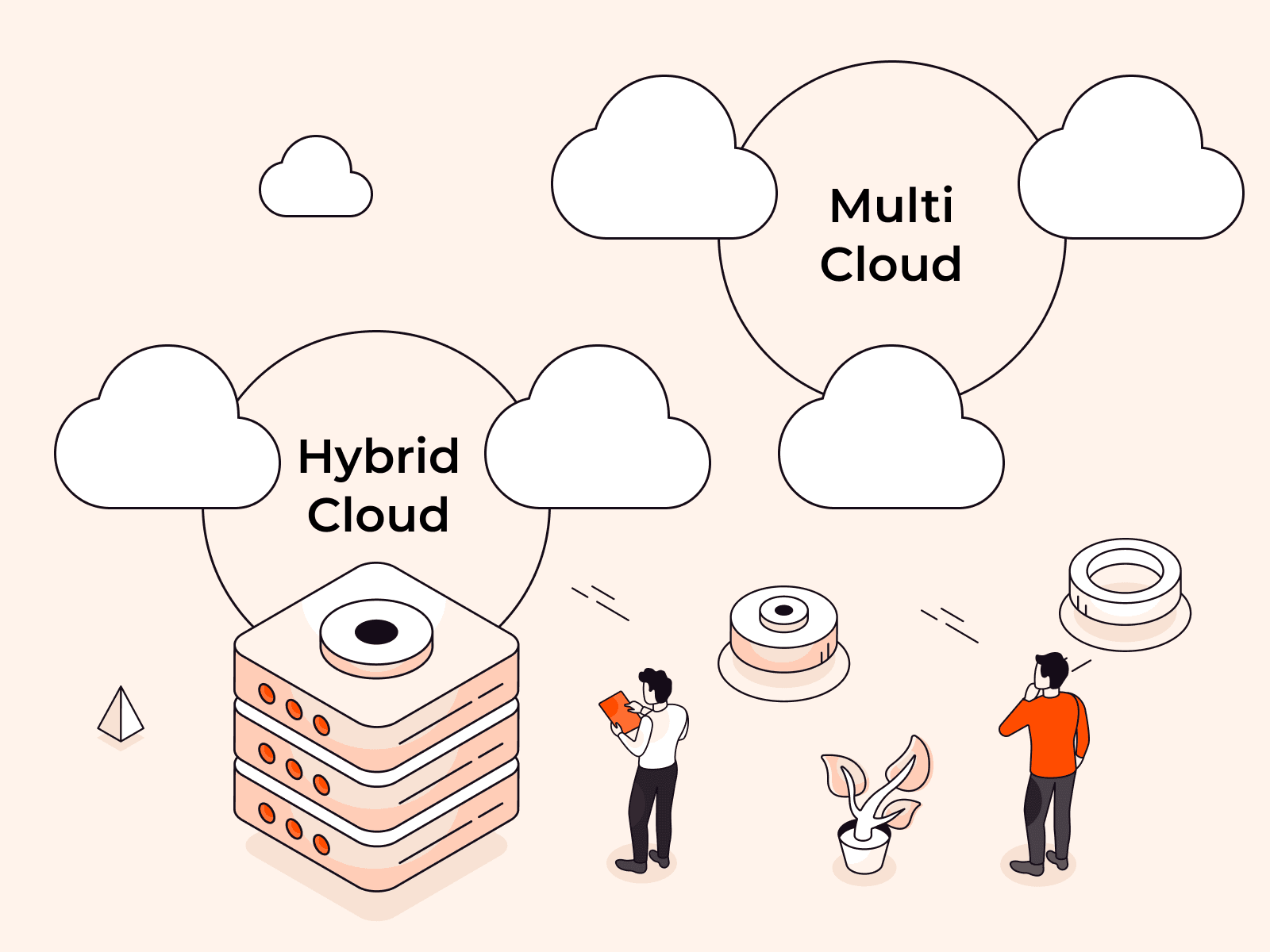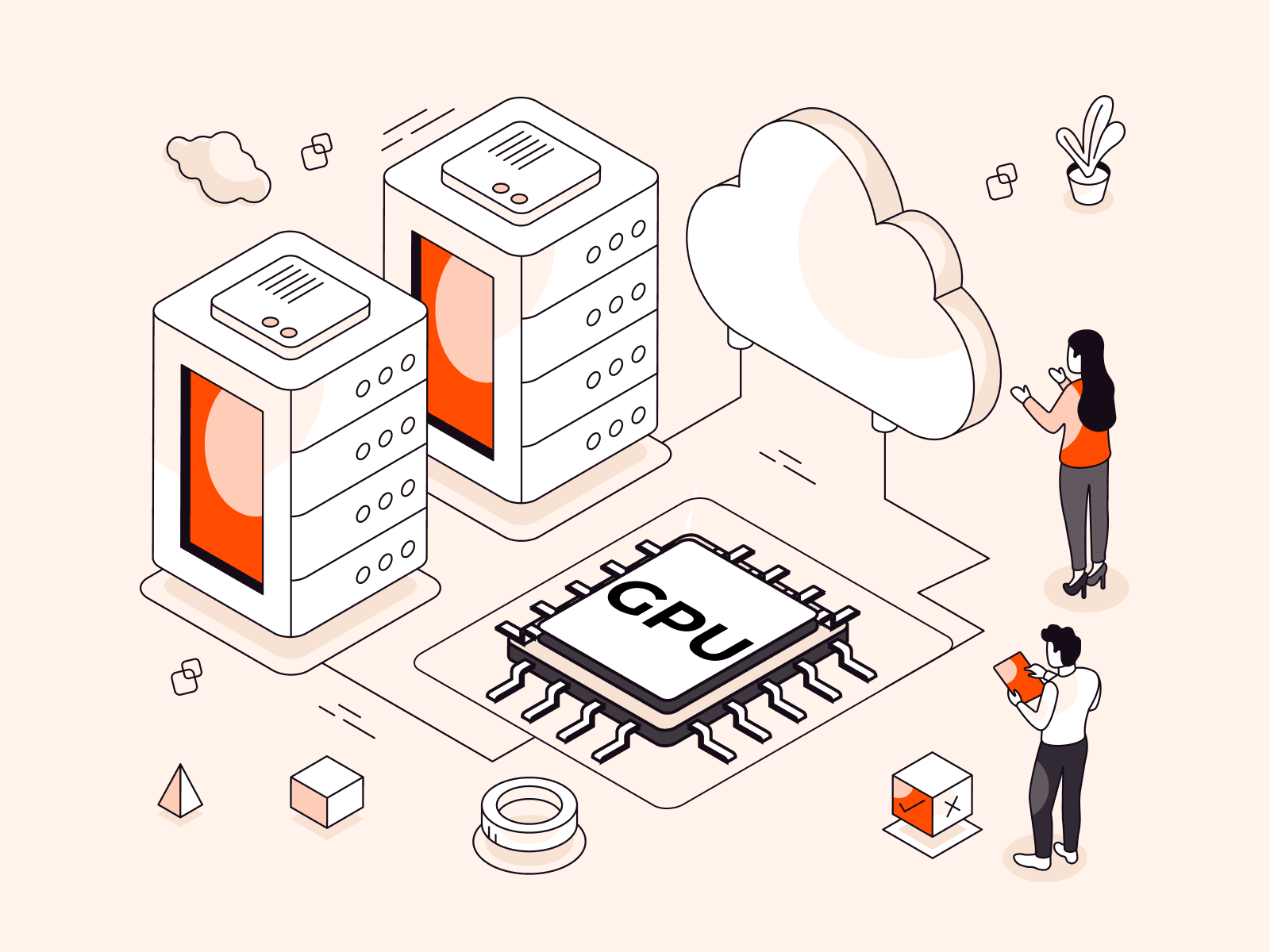Block storage is a data storage method that divides data into fixed-size chunks called blocks, each with a unique logical block address (LBA). Over 70% of enterprise mission-critical applications rely on block storage for data persistence, making it one of the most widely adopted storage architectures in modern computing environments.
Block storage operates by treating data as uniform blocks rather than files in folders, which enables the operating system to access storage as a continuous range of LBAs. This approach abstracts the physical location of data on the storage media, allowing for effective random read and write operations.
The system can achieve latency as low as sub-millisecond on NVMe SSDs, making it ideal for performance-sensitive applications.
The architecture of block storage differs from file storage and object storage in how it organizes and accesses data. While file storage uses hierarchical directory structures and object storage employs metadata-rich containers, block storage provides raw storage volumes that operating systems can format with any file system. This flexibility makes block storage the underlying foundation for other storage types, offering greater control over data organization and access patterns.
Block storage delivers several key advantages for enterprise environments, including high-performance random access, consistent low latency, and support for transactional workloads.
Major cloud providers offer block storage services with performance specifications reaching up to 256,000 IOPS and 4,000 MB/s throughput. These capabilities make block storage particularly valuable for databases, virtual machine storage, and applications requiring predictable performance characteristics.
Understanding block storage is important for IT professionals because it forms the backbone of most enterprise storage infrastructures and directly impacts application performance, data availability, and system flexibility in both on-premises and cloud environments.
What is block storage?
Block storage is a data storage method that divides data into fixed-size chunks called blocks, each assigned a unique logical block address (LBA) for independent access. The operating system treats these blocks as a continuous range of addresses, abstracting the physical location of data on storage media like HDDs, SSDs, or NVMe drives. This approach enables effective random read/write operations since each block can be accessed directly without reading through other data, making it ideal for applications requiring high performance and low latency.
Block storage serves as the foundational layer for other storage types, such as file and object storage. It's typically accessed over networks using protocols such as iSCSI over Ethernet or SCSI over Fibre Channel.
How does block storage work?
Block storage works by dividing data into fixed-size chunks called blocks, each assigned a unique logical block address (LBA) that the operating system uses to locate and access information. The system treats each block as an independent unit, typically ranging from 512 bytes to 4 KB in size, allowing for effective random read and write operations across the storage medium.
When you save data, the block storage system breaks it into these uniform blocks and distributes them across available storage space on physical media like HDDs, SSDs, or NVMe drives. The operating system maintains a mapping table that tracks which LBAs correspond to specific physical locations, creating an abstraction layer that hides the complexity of data placement from applications and users.
The key advantage of this approach is that blocks can be accessed independently and in any order, making it ideal for applications requiring high performance and low latency.
Unlike file storage systems that organize data hierarchically in folders, block storage presents a flat address space where each block is directly addressable. This design enables consistent throughput and supports demanding workloads like databases and virtual machines that need predictable storage performance.
Block storage typically connects over network protocols such as iSCSI over Ethernet or SCSI over Fibre Channel, allowing multiple servers to access the same storage resources. The system requires a file system layer to organize these raw blocks into recognizable files and directories for end users.
How does block storage compare to file storage and object storage?
Block storage compares to file storage and object storage by operating at different levels of data abstraction and serving distinct use cases. Block storage divides data into fixed-size chunks with unique addresses, file storage organizes data in hierarchical folders, and object storage manages data as discrete objects with metadata.
Performance and access patterns
Block storage delivers the highest performance with sub-millisecond latency on modern NVMe drives and effectively supports random read/write operations. It provides direct access to storage blocks without file system overhead, making it ideal for databases and virtual machines that require consistent high IOPS.
File storage offers good performance for sequential access but can struggle with random operations due to file system processing. Object storage prioritizes flexibility over speed, with higher latency but excellent throughput for large file transfers.
Architecture and flexibility
Block storage requires a file system layer to organize blocks into usable files and directories, giving applications complete control over data layout. File storage includes built-in file system management with features like permissions, metadata, and hierarchical organization.
Object storage uses a flat namespace where each object contains data, metadata, and a unique identifier, eliminating the need for complex directory structures and enabling virtually unlimited flexibility.
Use cases and applications
Block storage excels in scenarios demanding low latency and high performance, such as database storage, virtual machine disks, and enterprise applications requiring consistent throughput. File storage works best for shared access scenarios like network file shares, content management systems, and collaborative environments where multiple users need simultaneous access. Object storage suits applications requiring massive flexibility, such as backup systems, content distribution, data archiving, and cloud-native applications that can handle eventual consistency.
What are the key benefits of block storage?
The key benefits of block storage refer to the advantages organizations gain from using this foundational data storage method that divides information into fixed-size chunks with unique addresses. The key benefits of block storage are listed below.
- High performance: Block storage delivers exceptional speed with sub-millisecond latency on modern NVMe SSDs and can achieve up to 256,000 IOPS. This performance makes it ideal for demanding applications like databases and real-time analytics.
- Flexible scalability: Storage capacity can be expanded or reduced independently without affecting application performance. Organizations can add or remove storage blocks as needed, paying only for what they use.
- Direct hardware access: Block storage provides raw, unformatted storage that applications can access directly at the hardware level. This direct access eliminates file system overhead and maximizes throughput for performance-critical workloads.
- Snapshot capabilities: Point-in-time copies of data can be created instantly without interrupting operations. These snapshots enable quick backup, recovery, and testing scenarios while consuming minimal additional storage space.
- Multi-protocol support: Block storage works with various network protocols, including iSCSI, Fibre Channel, and NVMe over Fabrics. This compatibility allows it to be combined with existing infrastructure and diverse operating systems.
- Data persistence: Storage volumes maintain data independently of compute instances, ensuring information survives server failures or restarts. This separation provides reliability for mission-critical applications that can't afford data loss.
- Fine-grained control: Administrators can configure specific performance characteristics, encryption settings, and access permissions for individual storage volumes. This granular control enables optimization for different application requirements and security policies.
What are common block storage use cases?
Common block storage use cases refer to the specific applications and scenarios where organizations use block-level storage solutions to meet their data management needs. Typical block storage use cases are listed below.
- Database storage: Block storage provides the high-performance foundation that database systems require for consistent read and write operations. The direct access to individual blocks enables databases to quickly retrieve and update specific data records without processing entire files.
- Virtual machine storage: Virtual machines rely on block storage to create virtual disks that function like physical hard drives within the virtualized environment. This approach allows each VM to have dedicated storage space with predictable performance characteristics.
- Boot volumes: Operating systems use block storage as boot volumes to store system files and launch applications during startup. The low-latency access ensures fast boot times and responsive system performance.
- High-performance computing: Scientific simulations and data analysis workloads depend on block storage for its ability to handle intensive input/output operations. The consistent throughput supports applications that process large datasets or perform complex calculations.
- Backup and disaster recovery: Block storage serves as a reliable target for backup operations, allowing organizations to create point-in-time snapshots of their data. The block-level approach enables effective incremental backups that only copy changed data blocks.
- Container persistent storage: Containerized applications use block storage to maintain data persistence beyond the container lifecycle. This ensures that important application data survives container restarts and updates.
- Enterprise applications: Mission-critical business applications require the consistent performance and reliability that block storage delivers. The predictable latency and throughput support applications like ERP systems and customer databases that can't tolerate storage-related delays.
What are Storage Area Networks (SANs), and how do they use block storage?
A Storage Area Network (SAN) is a dedicated high-speed network that connects storage devices to servers, providing block-level data access across the network infrastructure. SANs use block storage by presenting storage volumes as raw block devices to connected servers, where each block has a unique logical block address that servers can access directly without file system overhead. This architecture allows multiple servers to share centralized storage resources while maintaining the performance characteristics of directly-attached storage, with enterprise SANs typically delivering sub-millisecond latency through protocols like Fibre Channel or iSCSI. The block storage foundation enables SANs to support mission-critical applications like databases and virtual machine environments that require consistent, high-performance data access.
How to implement block storage in cloud environments
You use block storage in cloud environments by provisioning virtual block devices that attach to compute instances and configuring them with appropriate file systems and performance settings.
First, choose your block storage service from your cloud provider's offerings. Most platforms offer multiple tiers with different performance characteristics, from general-purpose volumes delivering up to 3,000 IOPS to high-performance options supporting over 64,000 IOPS for demanding workloads.
Next, create your block storage volume by specifying the size, type, and performance requirements. Start with general-purpose SSD storage for most applications, then upgrade to provisioned IOPS volumes if you need consistent high performance for databases or other I/O-intensive applications.
Then, attach the volume to your compute instance through the cloud console or API. The volume appears as a raw block device that your operating system can detect, similar to adding a new hard drive to a physical server.
After that, format the attached volume with your preferred file system. Use ext4 for Linux systems or NTFS for Windows, depending on your application requirements and compatibility needs.
Mount the formatted volume to your desired directory path and configure automatic mounting on system restart. Update your system's fstab file to ensure the volume mounts correctly after reboots.
Configure backup and snapshot policies to protect your data. Most cloud platforms offer automated snapshot scheduling that creates point-in-time copies without downtime, allowing quick recovery from data corruption or accidental deletion.
Finally, monitor performance metrics like IOPS, throughput, and latency to ensure your storage meets application requirements. Set up alerts for capacity thresholds and performance degradation to prevent service disruptions.
Always test your block storage configuration with your actual workload before going into production, as performance can vary, primarily based on instance type, network conditions, and concurrent usage patterns. Find out more about optimizing your infrastructure with Gcore's high-performance storage solutions.
Frequently asked questions
What's the difference between block storage and direct-attached storage (DAS)?
Block storage and direct-attached storage (DAS) differ in their connection method: block storage connects over a network using protocols like iSCSI, while DAS connects directly to a single server through physical cables like SATA or SAS. Block storage can be shared across multiple servers and accessed remotely, whereas DAS provides dedicated storage exclusively to one connected server.
How much does block storage cost compared to other storage types?
Block storage costs 20-50% less than file storage for high-performance workloads but costs more than object storage for long-term archival needs. The price difference comes from block storage's direct-attached architecture requiring less processing overhead than file systems, while object storage wins on cost for infrequently accessed data due to its distributed design and lower redundancy requirements.
Can block storage be used for backup and archival?
Yes, block storage works well for backup and archival with features like point-in-time snapshots, versioning, and long-term retention policies. Many organizations use block storage for both operational backups and compliance archiving due to its reliability and data integrity guarantees.
What is IOPS, and why does it matter for block storage?
IOPS (Input/Output Operations Per Second) measures how many read/write operations a storage device can perform each second. It matters for block storage because it directly determines application performance and responsiveness. Higher IOPS means faster database queries, quicker virtual machine boot times, and better user experience for applications that frequently access stored data.
Is block storage secure for sensitive data?
Yes, block storage is secure for sensitive data when properly configured with encryption, access controls, and network security measures. Enterprise block storage systems provide multiple security layers, including data-at-rest encryption, in-transit encryption, and role-based access management to protect sensitive information.
How does block storage handle failures and redundancy?
Block storage handles failures through data replication across multiple drives and servers, automatically switching to backup copies when primary storage fails. Most enterprise block storage systems maintain 2-3 copies of data with automatic failover that completes in under 30 seconds.
Related articles
Subscribe to our newsletter
Get the latest industry trends, exclusive insights, and Gcore updates delivered straight to your inbox.






